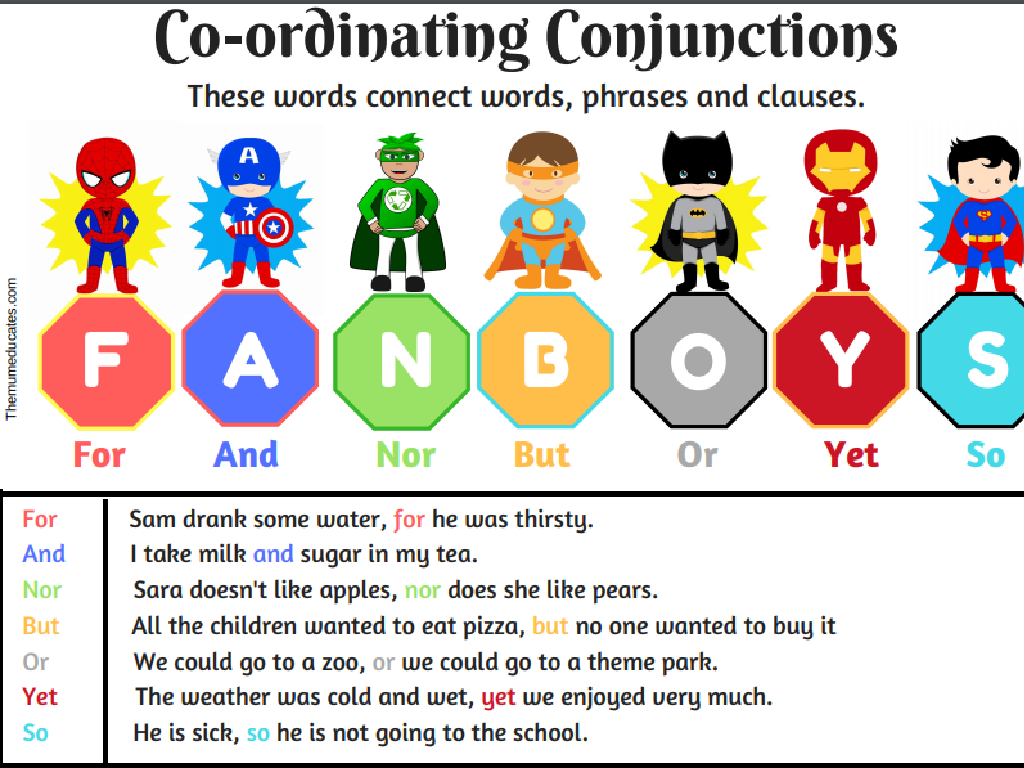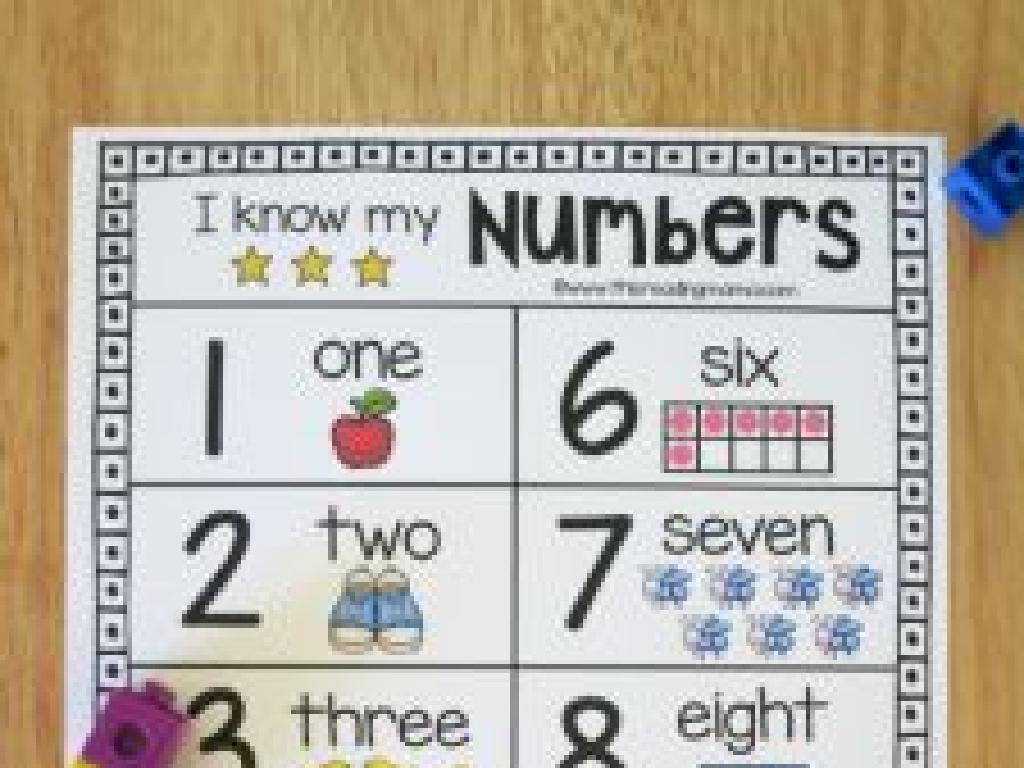Interpret Double Line Graphs
Subject: Math
Grade: Sixth grade
Topic: Data And Graphs
Please LOG IN to download the presentation. Access is available to registered users only.
View More Content
Understanding Double Line Graphs
– What are double line graphs?
– A graph with two lines each representing a set of data
– Comparing data with two variables
– They show trends over time for two different data sets on the same graph
– Real-world examples of double line graphs
– Temperature changes over a year in two different cities
– Interpreting data from double line graphs
– Analyze the intersection and divergence of lines to draw conclusions
|
This slide introduces double line graphs as a tool for comparing two related sets of data over time. Emphasize the importance of understanding the scale and what each line represents. Provide real-world examples, such as comparing temperatures or sales of two products over the same period. Teach students how to interpret the points where lines cross as moments of equal value and how the distance between lines can indicate the degree of difference between the two sets of data. Encourage students to think critically about what the data is telling them and to look for patterns or trends that emerge from the graph.
Understanding Double Line Graphs
– What is a double line graph?
– A chart with two lines plotting different data sets
– Two lines show changes over time
– Each line represents different data
– One line could represent sales in 2020, another for 2021
– Compare two related data sets
– See how two things change together, like temperature and ice cream sales
|
A double line graph is a powerful tool for displaying two sets of data over the same time period, allowing for easy comparison and trend analysis. Each line on the graph represents a different category of data. For example, one line could show the number of apples sold over several months, while another line could show the number of oranges sold in the same timeframe. This visual comparison helps us to quickly discern relationships between the two data sets, such as whether they have similar trends or if one is affected by changes in the other. When teaching this concept, use clear examples that are relevant to the students’ experiences, such as comparing the number of hours spent on homework vs. hours spent on video games over a week.
Key Components of Double Line Graphs
– Understanding X-axis and Y-axis
– X-axis is horizontal, Y-axis is vertical; both represent data values.
– Plotting data points for each line
– Each line on the graph represents a set of related data points.
– Using a legend for line distinction
– A legend explains what each line represents, using colors or patterns.
– Creating a descriptive title
– Title gives a clear idea of what the graph is showing.
|
This slide introduces the fundamental elements of double line graphs, which are essential for sixth-grade students to understand and interpret data effectively. The X-axis (horizontal) and Y-axis (vertical) are the foundation of the graph, representing different data values. Students should learn how to plot data points accurately for each line, ensuring they understand the relationship between the axes and the data. The legend is crucial for distinguishing between the two lines, often represented by different colors or patterns. Lastly, a descriptive title is necessary to immediately inform viewers about the graph’s subject. Encourage students to practice by creating their own double line graphs with clear legends and titles, using data from experiments or surveys.
Interpreting Double Line Graphs
– Understanding scale and intervals
– Learn to read the graph’s scale and the intervals between numbers
– Identifying data points
– Find and plot points on the graph where data is indicated
– What data points represent
– Each point on the lines corresponds to a data value at a certain time or condition
– Comparing two lines’ trends
– Observe how the lines move over time to see the relationship between them
|
This slide is aimed at teaching students how to interpret double line graphs. Start by explaining the scale and intervals, which are the foundation for understanding any graph. Then, move on to identifying data points on the graph, ensuring students understand that these points represent specific values. Next, discuss what these data points mean in the context of the graph’s topic. Finally, compare the trends shown by the two lines, which could indicate relationships or differences between the data sets. Encourage students to practice by providing examples of double line graphs and asking them to interpret the data. This will help them develop critical thinking skills and better understand how to compare multiple sets of data visually.
Creating Our Own Double Line Graphs
– Collect data for graphing
– Gather relevant and comparable data sets for two variables
– Choose a scale for the axes
– Determine a scale that fits the data range for clear comparison
– Plot points and draw lines
– Carefully plot the data points for each variable and connect them
– Add title and legend
– Label your graph with a descriptive title and a legend to distinguish the two lines
|
In this activity, students will apply their knowledge of double line graphs by creating one from collected data. Start by discussing the importance of collecting relevant data that can be compared. Then, guide students on how to choose an appropriate scale for their axes, ensuring that all data points will be visible and the graph will be easy to read. Next, demonstrate how to plot data points accurately and connect them to form two lines. Finally, emphasize the importance of adding a clear title and a legend to their graph, so that anyone reading it can understand what the two lines represent. This hands-on activity will help solidify their understanding of how to interpret and create double line graphs.
Weather Comparison with Double Line Graphs
– Compare two cities’ temperatures
– Observe how the lines differ between cities over the same days
– Analyze weekly temperature trends
– Look for patterns such as rising or falling temperatures throughout the week
– Interpret data for weather insights
– What does the graph reveal about each city’s climate?
– Discuss findings and observations
– Share thoughts on how the weather compares and any surprises in the data
|
This slide aims to teach students how to interpret double line graphs by comparing the temperatures of two different cities over the course of a week. Students should focus on identifying how the lines on the graph represent temperature changes day by day and how they can analyze these changes to understand broader weather trends. Encourage students to think critically about what the data might imply about each city’s weather patterns. For example, one city may have a more stable climate, while the other experiences more fluctuation. This exercise will help students develop their analytical skills and their ability to draw conclusions from graphical data.
Interpreting Double Line Graphs in Real Life
– Double graphs in daily life
– Used in weather, economics, sports to compare data over time
– Decision making via graphs
– Analyze graphs to make choices in business, science, etc.
– Practice with real graphs
– Take a graph from a news article and interpret the data
– Understanding graph trends
|
This slide aims to show students the practical applications of double line graphs in everyday life. They are commonly used in weather forecasting to compare temperature changes, in economics to show trends in different markets, and in sports to compare performance of teams or players over time. Understanding how to interpret these graphs is crucial for making informed decisions in various real-world scenarios. For practice, students will interpret a double line graph taken from a newspaper article, enhancing their ability to analyze and understand data trends. This exercise will help solidify their understanding of the concept and its relevance.
Class Activity: Let’s Interpret Together!
– Interpret a double line graph in groups
– Present findings to the class
– Discuss interpretations and insights
– Consider how different groups may see the data differently
– Understand multiple viewpoints
– Recognize that data can tell more than one story
|
This interactive class activity is designed to engage students in group work to interpret a double line graph. Provide each group with a different double line graph and a set of questions to guide their analysis. Encourage students to discuss within their groups and identify trends, comparisons, and any interesting points they observe. After group work, each group will present their graph and findings to the class, fostering a collaborative learning environment. Facilitate a class discussion to highlight the different interpretations and insights that emerge from the presentations. Emphasize the importance of understanding that data can be viewed from multiple perspectives and can tell different stories. This activity will help students to not only interpret graphs but also to appreciate the diversity of data interpretation.
Homework: Interpreting Double Line Graphs
– Find a double line graph
– Look in newspapers or online sources
– Write a paragraph on its interpretation
– Describe what the graph shows, trends, and comparisons
– Share your findings in class
– Be prepared to discuss your interpretation
– Understand real-world data
|
This homework assignment is designed to help students apply their knowledge of double line graphs to real-world data. Students should search for a graph in a newspaper or online, which will help them understand how these graphs are used in everyday media to compare information. They should write a paragraph interpreting the graph, focusing on the trends it shows and how the two sets of data compare to each other. In the next class, students will share their findings, providing an opportunity for peer learning and discussion. This exercise will reinforce their understanding of double line graphs and enhance their analytical skills.





